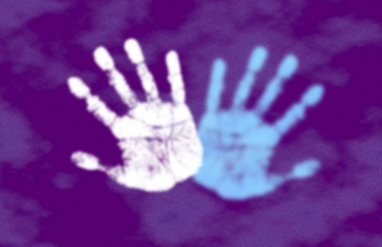It’s said that some 10 percent of people love public speaking. They’re excited at the thought of presenting their ideas in front of a crowd, and get a buzz from the whole experience.
Then, there’s the majority of us … who are hesitant (experiencing everything from a few butterflies to a full-blown panic) about talking in front of groups. (Glossophobia, which stems from the word gloss, is known as “a fear of public speaking.”)
Even a mild discomfort can derail the best speaker, so it’s worth knowing how to prepare ahead of time and minimize the stress. One way to calm the nerves before a declamation, oration, or that toast at your sister’s wedding, is finding the right words. While delivery is part of the package, what you say is critical.
For that 90 percent of us who need a little extra practice, we’ve collected some dos and don’ts to help you deliver that stellar speech.
Do: hook them with your greeting
Within the first minute or so, your audience is going to start analyzing you and the content you’re delivering. If your first words are boring and monotonous, they’re going to start to doze off. There’s always time to turn things around, but it’s a heck of a lot easier to hook with your first words.
If you start with something stuffy that they’ve heard a million times (“Good morning, thank you for being here. I’m [name] and today I’m going to talk about … ”) there’s a high chance you’re going to lose your audience. Instead, surprise them, delight them, make them laugh, or shock them.
TED Talks provide a slew of great examples of creative, attention-grabbing greetings. This one from Ted Pink has been viewed on YouTube more than 8 million times. How can you resist an opener like this?
“I need to make a confession at the outset here. Little over 20 years ago, I did something that I regret. Something that I’m not particularly proud of. Something that in many ways I wish no one would ever know but that here I feel kind of obliged to reveal.”
Don’t: overuse filler words
Um … let’s talk about one of the public speaking 101 rules that almost everyone breaks. We all use fillers. These are the ums, uhs, wells, and likes that serve no purpose but to clunk up your speech (and may even make you come off as a clunkhead).
Speakers rely on these to avoid silence or unknowingly utter them as a nervous habit. A constant hum of these interjections is a surefire way to make your audience uncomfortable and detract from the impact of what you’re saying.
By definition, um, is a downer: “used as an expression of doubt, hesitation, deliberation, interest, etc.” Uh is no better: “used to indicate hesitation, doubt, or a pause.” They’re straight up disfluencies, and you want to do everything you can to avoid them when speaking.
What to say instead: nothing!
Don’t fear the silence. A slight pause every once in awhile to regroup and refocus is fine. If you need reassurance that the pauses won’t be awkward, tape yourself once with all your natural interjections and count the uh, ums, etc. Then tape yourself again using pauses every time you want to use one. You’ll be amazed when you listen back at how natural the pauses sound and how much shorter they are than you thought they were.
Do: answer questions
If people are asking questions during your presentation, it’s a good sign they’re listening. Hooray!
While you might be tempted to push ahead and stay on course with your speech and tell them, “I’ll get back to that later,” don’t be so intransigent. If they’re engaged and bold enough to ask the question, then do them the service of answering it right away. You can always go back to your plan later, and if the speech takes a whole other (perhaps more interesting turn) because of questions, then so be it.
Also, make sure that you repeat the question before answering it. This does double duty to make sure you understand it and to make sure the audience heard the question.
Don’t: apologize or make excuses
No matter how tired you are, or how lousy you’re feeling, or how last-minute you stepped in to give this speech, don’t start off your speech by acknowledging the fact and apologizing. The same goes for phrases like I’m no good at public speaking or bear with me or sorry, I didn’t have much time to prepare for this. Nix them. You’re pretty much telling them up front, “Sorry, this is going to be a pretty awful speech, so don’t bother listening … ” They’re here to listen to you, so put on your game face and give them the best speech you can.
Just imagine if you were at a restaurant and the waiter came out and said, “Hi, well, I’m feeling like crap tonight, and the chef is really hungover, and well, none of the produce is looking that fresh, but I’ll have those entrees right out to you.” Would you be looking forward to that meal?
Do: use humor
Humor can be tricky. A joke that falls flat is palpably painful for both the speaker and the audience, but a well-placed joke or humorous anecdote can connect you. Speaking of your audience, that’s the most important rule when it comes to using humor in speeches: know your audience.
Obviously, you don’t want to make raunchy jokes if you’re addressing a room of nuns. You also want to make sure jokes are age-appropriate and take into account the geographic location and other factors of the people you’re addressing.
There may be exceptions, but in general, it’s a good idea to avoid jokes about sex, religion, politics, and other hot-button issues unless you really know your audience. And erring in favor of self-deprecating humor rather than poking fun at your audience is always a good bet.
Don’t: read to your audience
Reading your kids to sleep is great; reading your audience to sleep, not so much. Unless you’re at a book reading, straight reading will turn your speech into a snoozefest. A brilliant quote or line from a book may be an exception, but for the most part, you’re there to speak, so speak.
If you’re using slides, definitely don’t read those slides to the audience. Chances are, they can read them just fine themselves. Also, the text on slides should be breviloquent, so if it’s so long that you feel the need to read it out loud, it’s probably too long anyway.
Do: get creative with your conclusion
Don’t fizzle out at the end of your speech, finish strong! While you can succinctly review the main points of your speech, refrain from repeating everything the audience just heard and avoid saying, “In conclusion.”
You also don’t want to end too abruptly. Instead, end with a final anecdote, joke, memorable quote, or other takeaway so they walk away thinking about and ready to answer any calls to action. Martin Luther King Jr. ended his “I Have a Dream Speech” on this powerful, utterly unforgettable note:
“When we allow freedom to ring—when we let it ring from every city and every hamlet, from every state and every city, we will be able to speed up that day when all of God’s children, black men and white men, Jews and Gentiles, Protestants and Catholics, will be able to join hands and sing in the words of the old Negro spiritual, ‘Free at last, Free at last, Great God a-mighty, We are free at last.’”
How do you feel about public speaking now?














